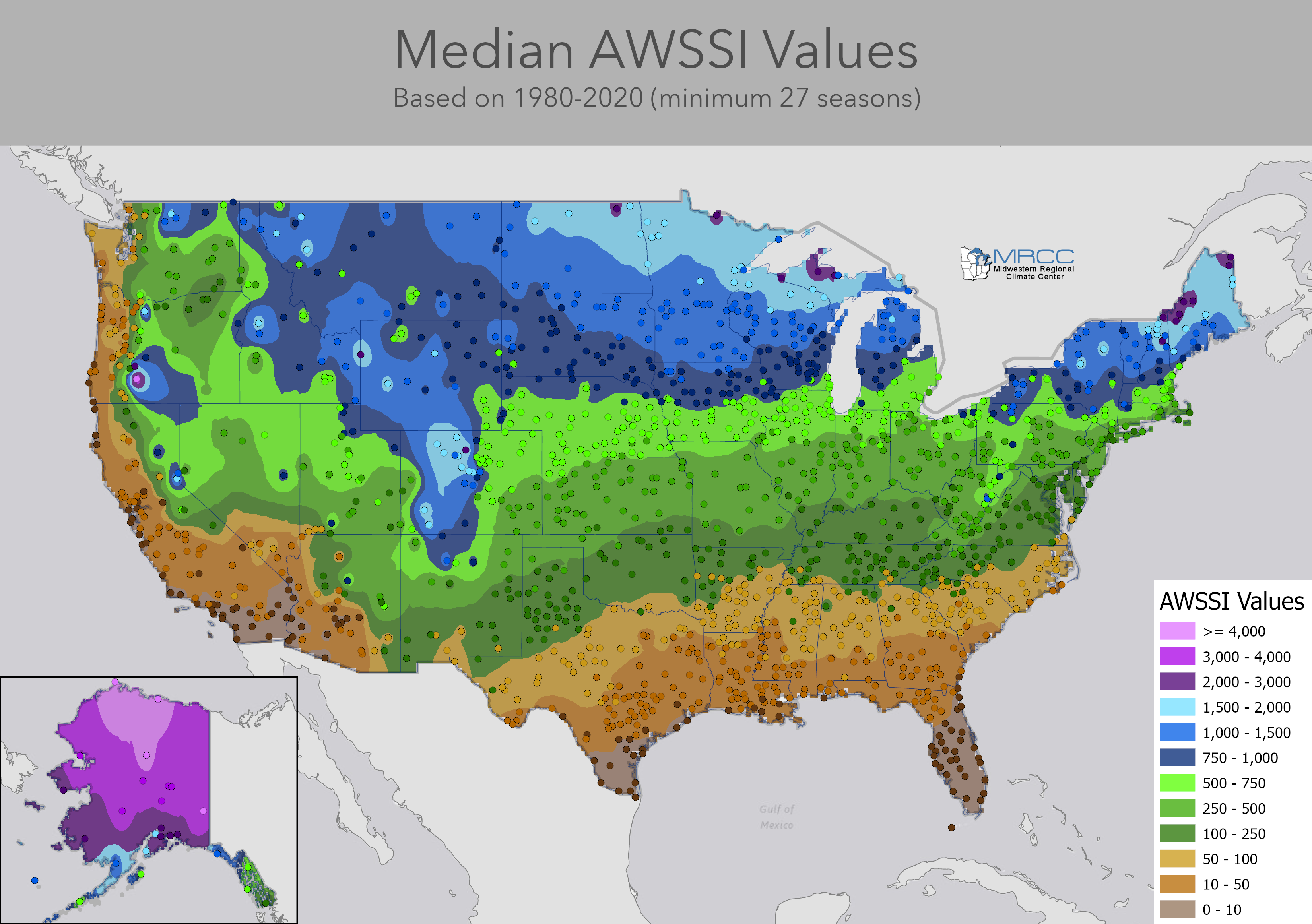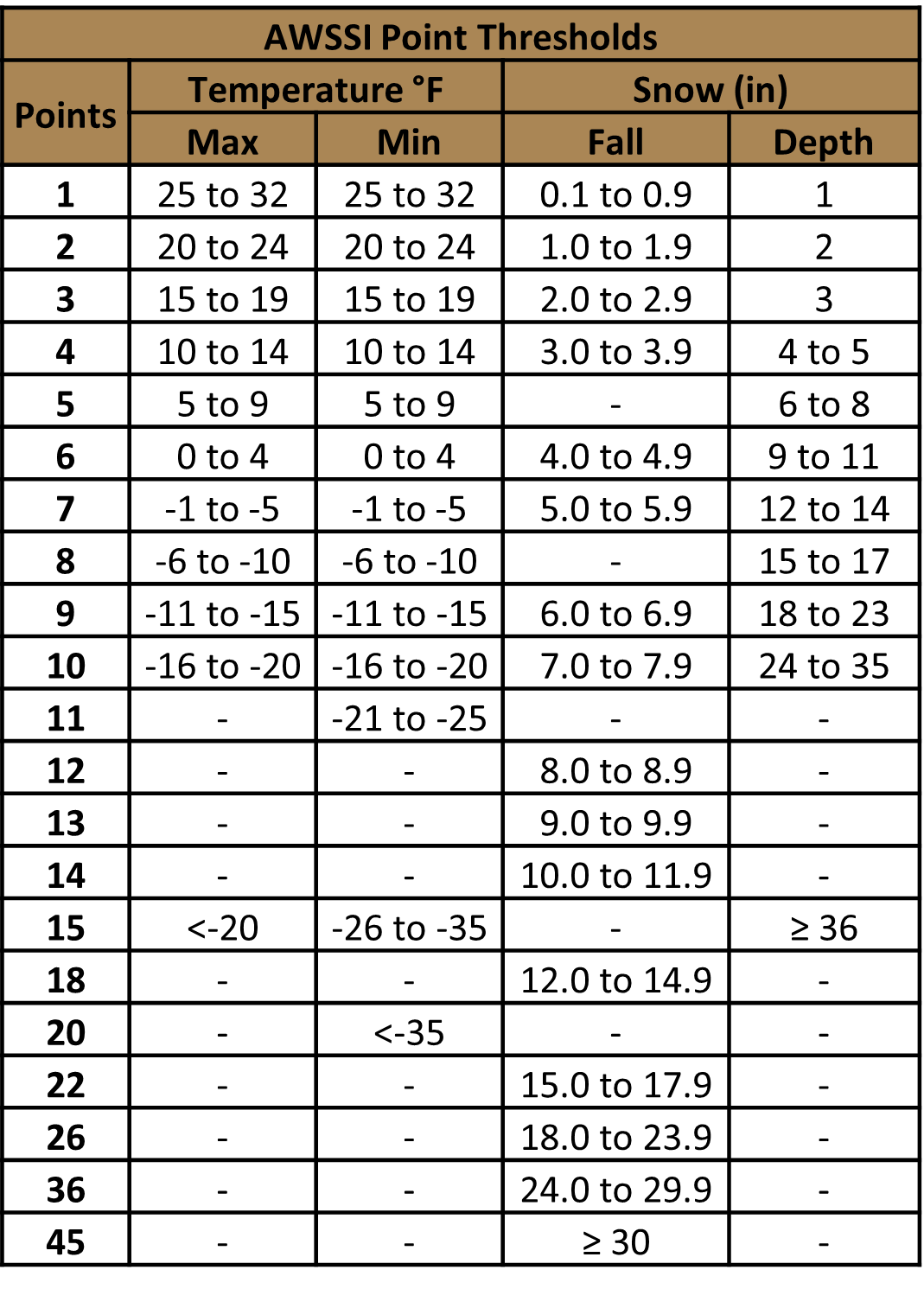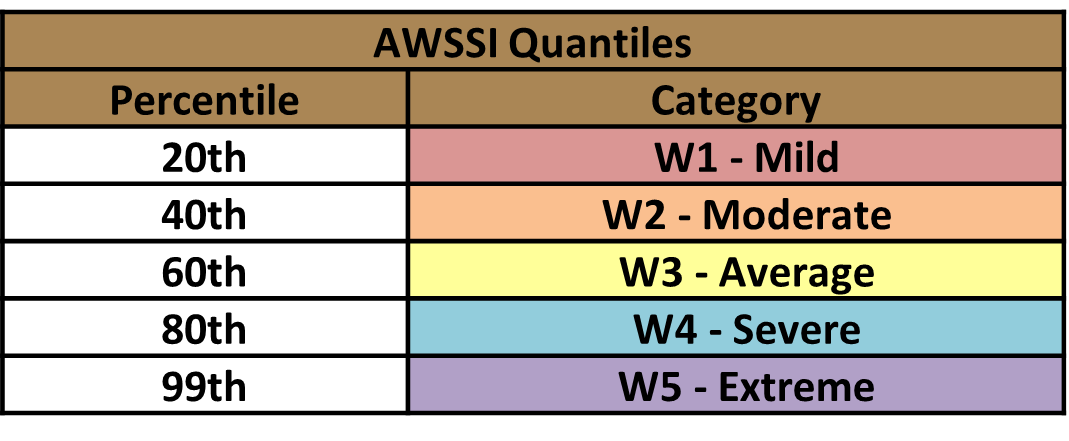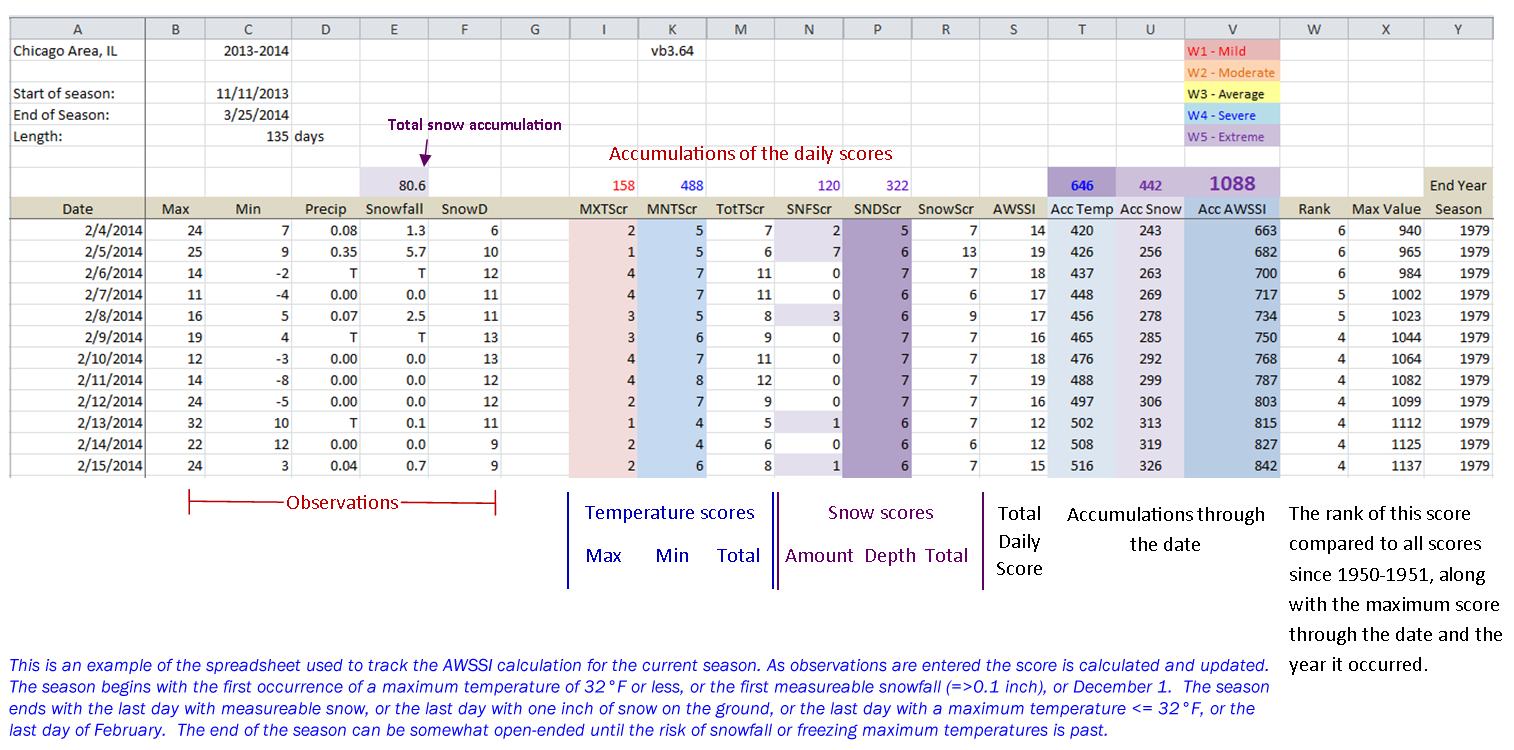About AWSSI
Winter seasons have significant societal impacts across all sectors ranging from direct human health and mortality to commerce, transportation, and education. The question “How severe was this winter?” does not have a simple answer. At the very least, the severity of a winter is related to the intensity and persistence of cold weather, the amount of snow, and the amount and persistence of snow on the ground. The Accumulated Winter Season Severity Index (AWSSI) was developed to objectively quantify and describe the relative severity of the winter season.

Goals of the AWSSI
- Use max/min temperature, snowfall, and snow depth to objectively index winter weather conditions.
- Create a historical database of AWSSI for locations with available temperature, snowfall and snow depth.
- Compare season to season AWSSI for a particular location in climatological context.
- Allow users access to objective data to make winter-informed decisions, especially pertaining to snow removal, commerce, and transportation.
Defining the AWSSI Season
The AWSSI is not limited to meteorological winter (December ‐ February) but is intended to capture winter weather from its earliest occurrence to its last.

The winter season begins with the first occurrence of any one of the following:
- First measurable snowfall greater than or equal to 0.1 inch.
- Maximum temperature less than or equal to 32°F.
- Winter season begins on December 1 if conditions above have not been observed.
The winter season ends with the last occurrence of any one of the following:
- Last measurable snowfall greater than or equal to 0.1 inch.
- Last day with 1 inch of snow on the ground.
- Last day with max temperature less than or equal to 32°F.
- Winter season ends February 28/29 if the above conditions have occurred.
How the AWSSI Accumulates

Daily scores are calculated based on scores assigned to temperature, snowfall, and snow depth thresholds (pictured right). Daily scores are accumulated through the winter season, allowing a running total of winter severity in the midst of a season, as well as a final, cumulative value characterizing the full season. Accumulations of the temperature and snow components of the index are computed separately and then added together for the total index. This allows comparison of the relative contribution of each to the total score.
The AWSSI has been processed for 365 locations across the continental U.S. to provide a variety of locations in different climate regimes for analysis. The AWSSI is calculated for each season from 1950‐1951 to the current winter season. The seasonal data is then subject to quality control, and seasons missing data that would contribute 5% or more of the seasons AWSSI are removed . Averages and standard deviations are calculated for running accumulations of daily temperature and snow scores as well as the total AWSSI.
Quintiles of AWSSI scores were determined for each location. Descriptive categories were assigned to each quintile as follows:

See an Example
AWSSI Data Delay
The Accumulated Winter Season Severity Index (AWSSI) is calculated using daily weather observations stored in the Applied Climate Information System (ACIS) database. Local weather observers are asked to input their data into ACIS daily, representing the previous day’s weather. The exact timing of daily data uploads can vary, and observers may enter data several days after observations are made. While the AWSSI is a once-a-day derived index, our system will check ACIS every hour to ensure the most recent observations are being used in the daily index calculation. The AWSSI map timestamp will update hourly each time ACIS is checked, and the “data valid through” date for each individual station can vary by one or more days depending on the last time an observer uploaded observations to ACIS.
Limitations
- Does not include wind (e.g. wind chill, blowing snow).
- Does not include mixed precipitation or freezing rain explicitly.
- Thresholds have been set with impacts in mind and are subject to adjustment in the future.
Available AWSSI Features
- Monitor current winter season AWSSI scores.
- Download current and historical daily AWSSI scores.
- Analyze end of season summaries through maps and tabular data downloads.
- Access the 1980-2020 AWSSI climatology map.
Additional Information
The Accumulated Winter Season Severity Index (AWSSI)
Barbara E. Mayes Boustead, Steven D. Hilberg, Martha D. Shulski, and Kenneth G. Hubbard. Journal of Applied Meteorology and Climatology, Vol. 54, No. 8, August 2015: 1693-1712.
Abstract | Full Text | PDF (2545 KB)
An Accumulated Winter Season Severity Index. Barbara Mayes Boustead, NOAA/NWS, Valley, NE; and S. Hilberg, M. D. Shulski, and K. G. Hubbard. Presented at 93rd Annual Meeting of the American Meteorological Society, January 2013.
An Accumulated Winter Season Severity Index (AWSSI). Webinar for the NWS Central Region, February 2017.
For more information, please contact Barb Mayes Boustead (barbara.mayes@noaa.gov) at the National Weather Service or us at the Midwestern Regional Climate Center.
